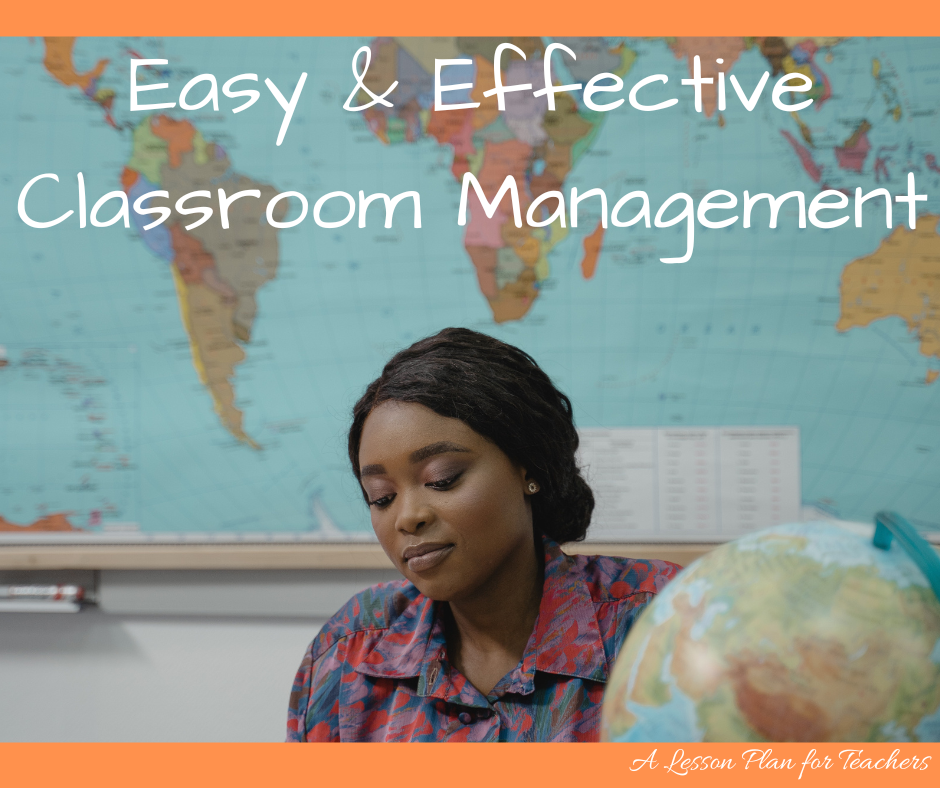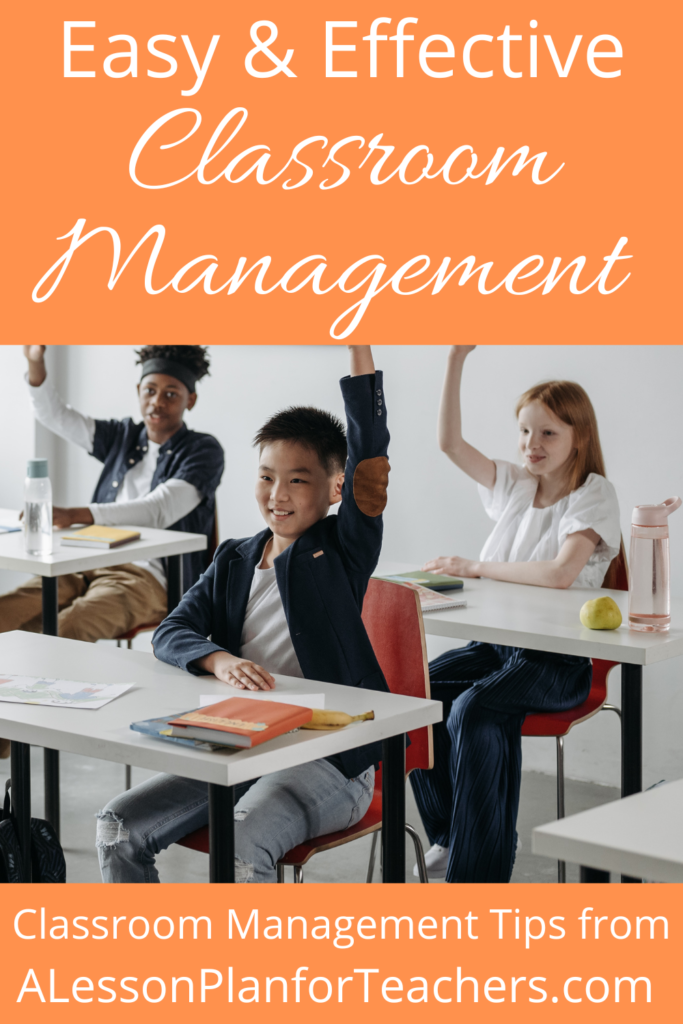Finding Easy and Effective Classroom Management tools can be a challenge. With so many different student needs in our classrooms now, each teacher must find new strategies that will reach them individually, but also as a whole. We want to build relationships, but not get too close. We need to set high expectations, yet not overwhelm. More importantly, we need to create a climate that is most effective for learning. All this in a day and age where the value of education is being questioned at every corner. So, what can you do that does work?

Classroom Management 101
There are a few basics that every teacher should have in their classroom management toolbox. These are the tools that will work across grade levels and across student personalities. Not surprisingly, they’ve been tried and true since the beginning of formal education.
It’s all in a Name
Names are important! Building relationships with students starts by getting to know them and that starts with their name. Ask if they have nicknames. Ask what they feel comfortable being called. And be willing to change things up, if requested. My granddaughter now wants to go by her middle name. It’s thrown all of us for a loop after 11 years of calling her one name. But it’s what makes her respond to us, so we do it! It’s her preference as she is forming her personality. It’s JUST a name to everyone else, but it is an identity for her.
*On a personal note – I moved around as an Army brat, going to 17 different schools. So many teachers glanced at the roster seeing a one “l” in Michele and called out for a “Michael.” It drove me crazy. And as a new kid in the class, it embarrassed me horribly. So, please make an effort here. It will make a huge difference.
Hello! How’s It Going? Hola! Bonjour! What’s Up?
Greeting your students is not a difficult task at all, yet can be one of the most effective tools for classroom management. Just stand at your door as students come into your classroom each day and be genuine in asking about their day. Show interest in their activities or hobbies. Be empathetic when they are struggling. While this may take a few minutes away from getting another task done, it can be more valuable than any other task. If students know you care about them, they truly will work harder for you.
Be Consistent! Fair! Transparent!
These seem like very difficult challenges when we are so overwhelmed with demands for individualized instruction. But instruction and relationship-building are two separate things. Being consistent, fair, and transparent in your classroom management simple means you are expecting everyone to be good humans in your classes. You treat everyone with the same expectations – high ones – and want to foster engagement that will benefit everyone. State your expectations in the beginning. Reinforce them every day. And hold firm with clear consequences when they are not met.
High Expectations for Effective Classroom Management
Some may suggest they the “easy teachers” are the most “liked” and, therefore, have the best classroom climate. This is only a truthful assumption IF the learning is taking place at an appropriate level and if ALL students are learning at that level. In reality, setting high expectations will not only help create a safe and reliable climate in which students can learn, it will also help students create and set achievable goals.
Another point to keep in mind here is that setting high academic and behavioral expectations does NOT mean teaching the same way or the same content to all students. Our lessons must be varied in data demand and in delivery method to engage more students and to guarantee greater success for all students.

Keeping It Simple
Setting up a high expectations and effective learning classroom climate does not have to be one that is filled with rules and restrictions. It can be fun! It can even be chaotic at times. Interactive (NOT INTERNET-DEPENDENT) classrooms allow movement, interaction, and involvement. They are flowing and freeing from the restrictions most often experienced in the traditional classroom. And these interactive classrooms are the ones with the greatest classroom management and the greatest academic success for their students.
Just remember that communication is key. Communicate with your students in ways that show interest and respect, and they will do the same in return. And if that doesn’t work, discuss why that is the case. Give them a voice, while also clearly setting (or resetting) the expectations. Use behavior contracts or classroom forms to help mediate when things go off the path. And always stress openly that you are there for your students’ success – not your own. They are the ones that will benefit from being there. They are the ones that must invest in their own learning. You are simply there to help guide them in that direction!
Happy Teaching!
